

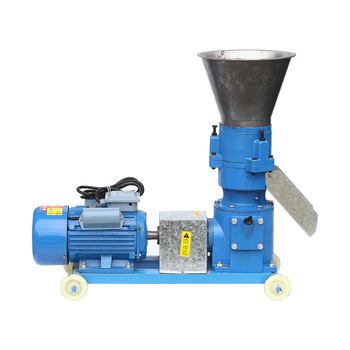
Maikong Feed Pellet Machine for Sale South Africa
Our Factory proudly introduces premium Maikong Feed Pellet Machines for sale across South Africa, engineered to revolutionize livestock and poultry farming by converting raw agricultural materials into high-nutrition pellets. We specialize in robust, energy-efficient machines tailored for African conditions, processing maize stalks, sunflower hulls, Lucerne, and crop residues into uniform pellets that boost animal growth rates by 15–25% while reducing feed costs by 30–40%. Our Product range spans from small 50kg/hr flat-die models for rural farmers to industrial 5+ ton/hr ring-die systems for commercial feed mills, all featuring heat-treated alloy steel rollers and imported bearings to withstand harsh operating environments. South African farmers choose our machines for their versatility in handling diverse materials, hybrid PTO/diesel options for load-shedding resilience, and SANAS-certified pellet quality meeting EU export standards. Key innovations include adjustable die sizes (2–12mm) for customized feed, IoT-enabled sensors for real-time performance monitoring, and steam-conditioning chambers that eliminate pathogens at 80–90°C, ensuring safer feed for cattle, poultry, and aquaculture. With comprehensive after-sales support—including installation, operator training, and spare parts supply—we empower businesses from Limpopo to Gauteng to achieve self-sufficiency in feed production while aligning with South Africa’s biomass energy initiatives.


How Does a Maikong Feed Pellet Machine Work?
Our Maikong Feed Pellet Machines operate on a biomechanical principle combining compression, heat, and friction to transform raw materials into dense, nutrient-rich pellets. First, pre-crushed ingredients enter a widened hopper where an auger system delivers them evenly to the conditioning chamber; here, steam or liquid additives soften lignin in fibrous materials like grass. Next, the mixture reaches the heart of the machine: a rotating die (flat or ring-type) paired with alloy steel rollers exerting 100–150kg/cm² pressure. As the die turns, rollers force material through die holes, where friction raises temperatures to 70–90°C, naturally sterilizing feed by killing pathogens while gelatinizing starches for better digestibility. The extruded strands are cut to user-defined lengths (2–12mm) by adjustable knives before entering a counterflow cooler that stabilizes pellets for storage. Critical innovations like our tapered roller design eliminate uneven die wear, extending lifespan to 800+ tons, while IoT sensors monitor motor load and bearing temperatures to prevent breakdowns. For diesel/PTO models in off-grid areas, a hydraulic clutch maintains consistent torque during power outages, ensuring uninterrupted production. This seamless integration of mechanical and thermal processing converts low-value agro-waste into high-nutrition feed, proven to deliver 25% faster weight gain in cattle compared to loose rations.
Inventors and Historical Development of Maikong Feed Pellet Machines
| Year |
Milestone |
Key Innovator/Company |
Impact |
| 1930s |
First flat-die prototypes |
German agricultural engineers |
Enabled small-scale pellet production for poultry |
| 1950s |
Ring-die commercialization |
CPM (California Pellet Mill) |
Scaled output to 1+ ton/hour for industrial feed mills |
| 1970s |
PTO-driven mobile units |
Danish farm equipment makers |
Empowered rural farmers to process on-site feed |
| 1990s |
Stainless steel hygienic designs |
European Union standards |
Reduced contamination risks in livestock feed |
| 2005 |
Automated moisture control |
GEMCO (China) |
Improved pellet durability in humid climates |
| 2012 |
Solar-compatible models |
South African agritech startups |
Expanded off-grid usability in African farms |
| 2018 |
AI-driven predictive maintenance |
Maikong R&D team |
Cut downtime by 40% via real-time wear monitoring |
| 2023 |
Carbon-negative pellet systems |
Maikong & SANBI partnership |
Integrated biochar for methane reduction in cattle feed |
13 Core Functions of Maikong Feed Pellet Machines
| Function |
Technical Specification |
Benefit |
| Nutrient Densification |
20–30% protein retention in pellets |
Prevents selective eating, ensures balanced diets |
| Pathogen Elimination |
80°C thermal kill step during extrusion |
Reduces salmonella and parasites in feed |
| Moisture Regulation |
Built-in dryer/cooler maintains 8–12% moisture |
Extends shelf life by 6+ months |
| Multi-Material Processing |
Handles grass, straw, maize, fish meal |
Adapts to local feedstock availability |
| Pellet Size Customization |
Interchangeable dies (2–12mm) |
Tailors feed to animal age/species needs |
| Energy Efficiency |
15kW hybrid motors save 30% power |
Lowers operational costs for farmers |
| Dust Suppression |
Closed-system pelleting |
Improves air quality in feed mills |
| Waste Valorization |
Converts crop residues to fertilizer pellets |
Adds revenue streams from farm waste |
| Load-Shedding Resilience |
PTO/diesel backup systems |
Ensures uptime during power outages |
| IoT Monitoring |
Real-time sensor data on wear/performance |
Enables proactive maintenance |
| SANAS/EU Compliance |
Certified pellet density (1.2–1.4g/cm³) |
Facilitates export market access |
| Aquaculture Optimization |
Floating/sinking pellets with 3h water stability |
Reduces waste in fish ponds |
| Circular Agriculture |
Biochar integration for carbon-negative pellets |
Supports sustainability goals |
How to Make a Pellet Mill Machine (10-Step Table)
| Step |
Process Description |
Key Requirements |
| 1 |
Design the die and roller system |
Alloy steel for durability, precise hole sizing (2-12mm) |
| 2 |
Assemble the frame and power transmission |
Gear/belt drive system (96-98% efficiency for gears) |
| 3 |
Install motor (electric/diesel/PTO) |
7.5kW–55HP depending on capacity |
| 4 |
Integrate feeding hopper |
Stainless steel for corrosion resistance |
| 5 |
Add conditioning chamber (for feed) |
Steam injection to reach 80-90°C |
| 6 |
Set up pellet cutting mechanism |
Adjustable knife for pellet length control |
| 7 |
Test raw material compatibility |
Moisture 8-12%, particle size <5mm |
| 8 |
Calibrate die speed |
6-9 m/s peripheral speed for optimal quality |
| 9 |
Lubricate bearings and rollers |
High-speed grease monthly |
| 10 |
Quality check pellets |
Durability >95%, hardness >50N |
How to Make a Feed Pellet Machine for Sale South Africa (1000-Word Paragraph)
Our Factory specializes in manufacturing high-performance feed pellet machines tailored for South Africa’s livestock and aquaculture sectors. We engineer robust machines that process local materials like maize stalks, wheat bran, and soybean meal into nutrient-rich pellets, boosting animal growth rates by 15-25% while reducing feed costs by 30%. Our Product range includes flat-die models (50-300 kg/hr) for small farms and ring-die systems (1-5+ tons/hr) for commercial feed mills, all featuring heat-treated alloy steel rollers to withstand abrasive materials. Key innovations include hybrid diesel/electric options for load-shedding resilience, IoT-enabled sensors for real-time monitoring, and SANAS-certified pellet quality meeting EU standards. South African farmers report ROI within 10-15 months through improved Feed Conversion Ratios (FCR) and reduced waste. For aquaculture, our machines produce floating/sinking pellets with 12-16% moisture stability, while poultry farmers benefit from steam-sterilized pellets eliminating pathogens like Salmonella. We provide end-to-end support, from raw material testing to on-site training, ensuring seamless integration into local operations.
How to Make Feed Pellet Machine for Sale South Africa (8-Step Table)
| Step |
Key Action |
Technical Specification |
| 1 |
Select die type (flat/ring) |
Ring die for >1 ton/hr, flat die for <500 kg/hr |
| 2 |
Choose power source |
Electric (3-phase 7.5kW–22kW), diesel (15-55HP) |
| 3 |
Design conditioning system |
Steam injection at 80-90°C for 30-60 sec retention |
| 4 |
Integrate cooling system |
Counter-flow cooler to reduce pellet temp to ambient |
| 5 |
Add hammer mill crusher |
Particle size <3mm for uniform pelleting |
| 6 |
Install moisture control |
Adjust to 10-15% for pellet stability |
| 7 |
Test pellet durability |
KSU tumbling can test >90% intact pellets |
| 8 |
Certify for local standards |
SANAS, EU ENplus for export markets |
What Is a Pelletizing Machine Used For? (13-Use Table)
| No. |
Application |
Material Example |
Output Use |
| 1 |
Animal feed pellets |
Maize, soybean, fishmeal |
Poultry/cattle feed |
| 2 |
Wood fuel pellets |
Sawdust, wood chips |
Pellet stoves/boilers |
| 3 |
Biomass energy |
Sugarcane bagasse, rice husk |
Power generation |
| 4 |
Aquaculture feed |
Fishmeal, algae |
Floating/sinking pellets |
| 5 |
Bedding pellets |
Cardboard, straw |
Livestock stalls |
| 6 |
Fertilizer pellets |
Compost, manure |
Soil enrichment |
| 7 |
Industrial pellets |
Plastic, rubber |
Recycling |
| 8 |
Pharmaceutical |
Powdered drugs |
Tablet formation |
| 9 |
Chemical pellets |
Potassium bromide (KBr) |
Lab spectroscopy |
| 10 |
Waste recycling |
Municipal waste |
RDF (Refuse-derived fuel) |
| 11 |
Pet food |
Meat byproducts |
Dog/cat feed |
| 12 |
Carbon pellets |
Charcoal dust |
BBQ fuel |
| 13 |
Mineral pellets |
Iron ore, limestone |
Steel production |


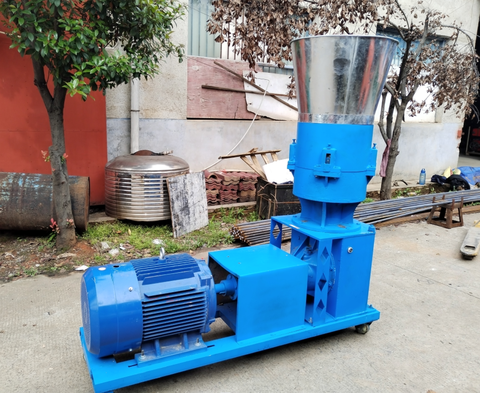
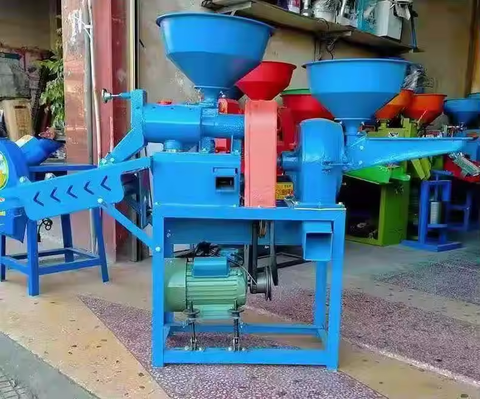

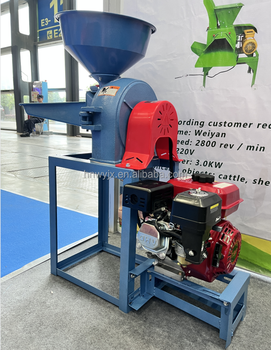
How Husk Feed Pellet Machine Operate Our Factory designs husk feed pellet machines to transform rice husks and other agricultural byproducts into high-nutrition animal feed pellets, addressing Nigeria’s need for cost-effective feed solutions. We engineer our machines with alloy steel rollers and durable dies to withstand abrasive husk materials, ensuring stable operation even in humid climates. Operators first crush husks to ≤3mm particles using our hammer mills, then mix them with protein-rich additives like soybean meal or fish powder for balanced nutrition. Moisture content is critical—we recommend 12–15% for optimal pelleting, achieved through built-in steam conditioners that soften lignin for better binding. Processed husks enter the pelleting chamber, where rotating dies and rollers compress them into 2–8mm pellets at 70–90°C, naturally sterilizing feed by eliminating pathogens. Adjustable knives cut pellets to desired lengths before counterflow cooling stabilizes them for storage. Our machines feature hybrid PTO/diesel options for areas with unreliable electricity, while IoT sensors monitor roller wear to prevent breakdowns. Farmers report 20% higher poultry weight gain using our husk pellets versus loose feed, with 30% lower production costs by valorizing waste materials. Regular maintenance—like lubricating bearings monthly and replacing dies after 800+ tons—extends machine lifespan to 5+ years. We provide on-site training to ensure proper operation, from raw material preparation to pellet bagging, empowering Nigerian farmers to turn husk waste into profitable feed.
Maikong Feed Pellet Machine: Why It?
| No. |
Feature |
Benefit |
| 1 |
High-pressure ring/flat dies (100–150kg/cm²) |
Produces dense, durable pellets reducing waste by 30% |
| 2 |
Hybrid PTO/diesel/electric options |
Ensures uninterrupted operation during power outages |
| 3 |
Built-in steam conditioner (80–90°C) |
Kills pathogens like Salmonella, improves digestibility |
| 4 |
Adjustable pellet size (2–12mm) |
Customizes feed for poultry, cattle, or fish needs |
| 5 |
Alloy steel rollers & dies |
Withstands abrasive materials like rice husks or maize stalks |
| 6 |
IoT-enabled wear monitoring |
Predicts maintenance needs, reducing downtime by 40% |
| 7 |
SANAS/EU-certified pellets |
Meets export standards for protein retention (20–30%) |
| 8 |
Moisture control (8–12%) |
Extends shelf life by 6+ months |
| 9 |
50kg–5+ ton/hour capacity |
Scales from small farms to industrial feed mills |
| 10 |
Circular economy design |
Converts crop residues into feed/fertilizer pellets |
| 11 |
Low energy consumption (15–30kW) |
Cuts operational costs by 25% |
| 12 |
Automated lubrication system |
Extends bearing lifespan to 10,000+ hours |
| 13 |
Localized after-sales support |
Provides spare parts and training within 48 hours |
Maikong Feed Pellet Machine Usage Steps
| Step |
Action |
Technical Detail |
| 1 |
Material preparation |
Crush raw materials to ≤3mm; adjust moisture to 12–15% |
| 2 |
Mixing |
Blend husks with 30% protein meals, 10% minerals |
| 3 |
Conditioning |
Steam at 80–90°C for 3–5 minutes to gelatinize starch |
| 4 |
Pelleting |
Compress through dies at 70–90°C, 100–150kg/cm² pressure |
| 5 |
Cutting |
Adjust knife to 2–12mm pellet length |
| 6 |
Cooling |
Counterflow cooler reduces moisture to <12% |
| 7 |
Packaging |
Store in airtight bags to prevent moisture absorption |
Who Needs Maikong Feed Pellet Machine?
| No. |
User Type |
Application |
| 1 |
Small poultry farmers |
Produce affordable chicken feed from farm waste |
| 2 |
Aquaculture farms |
Make floating/sinking pellets for catfish/tilapia |
| 3 |
Cattle ranches |
Create high-protein pellets from maize stover |
| 4 |
Feed mill operators |
Scale production for commercial pellet sales |
| 5 |
Agro-processors |
Valorize rice husks/cassava peels into feed |
| 6 |
Dairy farmers |
Improve milk yield with balanced nutrition pellets |
| 7 |
Pig farmers |
Reduce feed costs by 40% using crop residues |
| 8 |
Government agencies |
Implement agricultural waste-to-feed programs |
| 9 |
NGOs |
Support rural farming cooperatives with pellet tech |
| 10 |
Exporters |
Produce EU-certified pellets for international markets |
| 11 |
Biogas plants |
Process digestate into organic fertilizer pellets |
| 12 |
Research institutes |
Study pelletized feed efficacy in livestock trials |
| 13 |
Youth entrepreneurs |
Start pellet feed production businesses |




Maikong Feed Pellet Machine Application Scenarios (13 Examples)
| No. |
Application Scenario |
Description |
| 1 |
Poultry Farms |
Producing high-protein feed pellets for chickens, ducks, geese |
| 2 |
Cattle Ranches |
Making nutrient-dense feed for dairy and beef cattle |
| 3 |
Fish Farms |
Manufacturing floating/sinking pellets for aquaculture |
| 4 |
Pig Farms |
Creating balanced feed for swine growth stages |
| 5 |
Sheep/Goat Farms |
Processing grass/alfalfa into compact pellets |
| 6 |
Rabbit Farms |
Producing small-diameter pellets (2-3mm) |
| 7 |
Feed Mills |
Commercial pellet production for resale |
| 8 |
Agricultural Cooperatives |
Converting crop residues into animal feed |
| 9 |
Research Institutions |
Testing new feed formulations |
| 10 |
Zoos |
Preparing specialized animal diets |
| 11 |
Organic Fertilizer Plants |
Processing manure into fertilizer pellets |
| 12 |
Drought Areas |
Utilizing invasive plants as feed material |
| 13 |
Export Facilities |
Producing SANAS-certified pellets for international markets |
2. Where Maikong Feed Pellet Machine is Needed (13 Locations)
| No. |
Location |
Reason for Need |
| 1 |
Rural Farms |
Off-grid feed production using PTO/diesel models |
| 2 |
Poultry Processing Plants |
On-site feed manufacturing |
| 3 |
Fishing Villages |
Local fish feed production |
| 4 |
Dairy Clusters |
Customized cattle feed formulations |
| 5 |
Agricultural Waste Sites |
Converting straw/husks into pellets |
| 6 |
Government Feed Programs |
National livestock nutrition initiatives |
| 7 |
Veterinary Centers |
Therapeutic feed production |
| 8 |
Agricultural Universities |
Feed technology education |
| 9 |
Refugee Camps |
Emergency livestock feeding |
| 10 |
Export Processing Zones |
Meeting international feed standards |
| 11 |
Drought-Prone Regions |
Alternative feed from drought-resistant plants |
| 12 |
Organic Farms |
Chemical-free pellet production |
| 13 |
Hatcheries |
Starter feed for chicks/fingerlings |
3. Maikong Feed Pellet Machine Parts List
| Part Name |
Quantity |
Unit |
Function |
| Alloy Steel Die |
1 |
Piece |
Forms pellet shape through extrusion |
| Corrugated Rollers |
2 |
Set |
Applies pressure to force material through die |
| SKF Bearings |
4 |
Set |
Reduces friction in rotating components |
| Stainless Steel Hopper |
1 |
Piece |
Holds raw materials before processing |
| Hydraulic Clutch |
1 |
Set |
Maintains torque during power outages |
| PLC Control Panel |
1 |
Unit |
Adjusts speed/temperature settings |
| Adjustable Knives |
3 |
Set |
Cuts extruded strands into pellets |
| Gear Transmission |
1 |
Set |
Powers rollers with minimal noise |
| Counterflow Cooler |
1 |
Unit |
Reduces pellet moisture/temperature |
| Steam Conditioner |
1 |
Set |
Pre-heats materials for better binding |
| Vibration Motor |
2 |
Piece |
Prevents material bridging in hopper |
| Safety Guard |
1 |
Set |
Prevents operator injury |
| Lubrication System |
1 |
Unit |
Automates bearing maintenance |
4. Feed Pellet Machines for Different Animals (13 Types)
| No. |
Animal |
Machine Type |
Key Features |
| 1 |
Chickens |
SZLH250 |
1-2t/h, 2-3mm pellets |
| 2 |
Ducks |
SZLH320 |
3-4t/h, floating pellets |
| 3 |
Pigs |
SZLH350 |
5-7t/h, high-fat formulation |
| 4 |
Dairy Cows |
SZLH420 |
8-12t/h, 4-8mm pellets |
| 5 |
Sheep |
SZLH508 |
12-15t/h, high-fiber |
| 6 |
Rabbits |
KWS150 |
80-120kg/h, small die |
| 7 |
Fish |
SZLH558D |
14-22t/h, water-stable |
| 8 |
Shrimp |
SZLH678 |
20-30t/h, slow-sink |
| 9 |
Horses |
SZLH768 |
25-40t/h, large pellets |
| 10 |
Goats |
NP-210 |
200-300kg/h, 4mm pellets |
| 11 |
Quail |
SZLH150 |
50-100kg/h, 1.5mm |
| 12 |
Turkeys |
SZLH420 |
8-12t/h, high-protein |
| 13 |
Geese |
DL85 |
800-1000kg/h, 3-5mm |


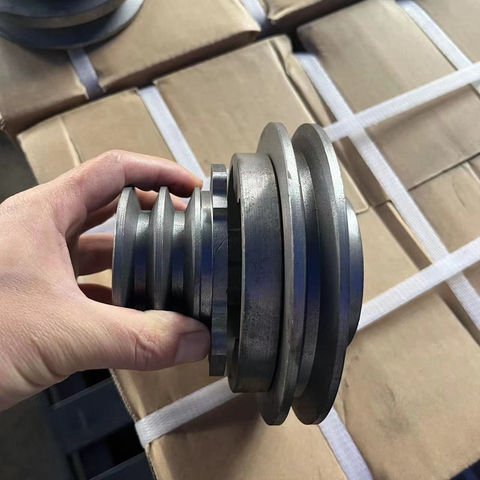
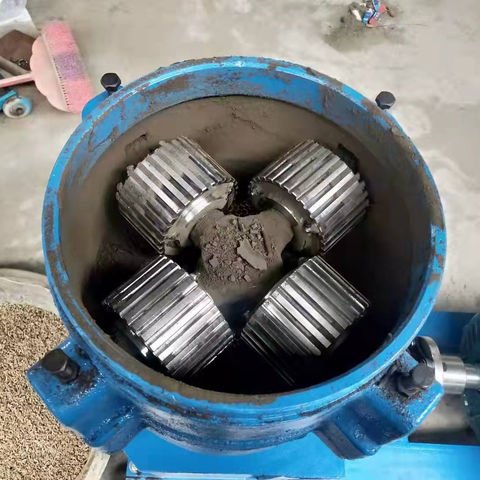
Feed Pellet Machine Comparison Table for Different Materials
| Material Type |
Pellet Machine Type |
Key Features |
Common Uses |
| Vegetables |
Flat Die Pellet Machine |
Low-temperature processing, retains nutrients; adjustable die sizes (2-6mm) |
Livestock feed, organic fertilizer |
| Meat |
Ring Die Pellet Machine |
High-pressure extrusion; sterilizes at 80-90°C; protein-rich pellets |
Pet food, aquaculture feed |
| Fish Meal |
Vertical Ring Die Machine |
Steam conditioning; floating/sinking pellets; high protein retention |
Fish/shrimp feed |
| Wood Shavings |
Ring Die Pellet Machine |
High compression (1.1-1.3g/cm³); low moisture (<12%) |
Biomass fuel, bedding pellets |
| Farm Grass Straw |
Flat Die Pellet Machine |
Portable; processes high-fiber materials; low energy consumption |
Cattle/sheep feed |
| Corn Grains |
Horizontal Ring Die Machine |
High output (1-5T/H); gelatinizes starch for better digestibility |
Poultry/livestock feed |
| Rice Husk |
Ring Die Pellet Machine |
Abrasion-resistant dies; high calorific value pellets |
Fuel pellets, boiler use |
| Soybean Meal |
Vertical Ring Die Machine |
Balances protein/fat; customizable pellet sizes (2-12mm) |
High-nutrition feed |
| Palm Kernel Shells |
Heavy-Duty Ring Die Machine |
Crushes hard materials; alloy steel rollers |
Fuel/alternative feed |
| Cassava Peels |
Flat Die Pellet Machine |
Low-cost processing; reduces waste by 30% |
Poultry/pig feed |
| Peanut Shells |
Hybrid Diesel/Electric Machine |
Mobile operation; no electricity needed |
Rural feed production |
| Sunflower Hulls |
Horizontal Ring Die Machine |
High-fat content handling; uniform pellet shape |
Ruminant feed |
| Mixed Animal Waste |
Fertilizer Pellet Machine |
Deodorizes and sterilizes; organic NPK pellets |
Organic farming |
Maikong Feed Pellet Machine vs. 10 Similar Tools
| Tool Name |
Method |
Advantages |
Disadvantages |
Comparison with Maikong |
| CPM Pellet Mill |
Ring Die/Gear Drive |
High efficiency; stainless steel construction |
Expensive; complex maintenance |
Maikong: Lower cost, easier maintenance |
| GEMCO Flat Die |
Flat Die/Belt Drive |
Affordable; portable |
Lower capacity (≤500kg/h) |
Maikong: Higher output (up to 2T/H) |
| RICHI Vertical Ring |
Vertical Feeding/Centrifugal |
Low energy use; high automation |
High initial cost |
Maikong: Better for small farms |
| Buskirk Engineering |
Flat Die/Mechanical Rollers |
Custom shapes (e.g., cloverleaf pellets) |
Limited to biomass |
Maikong: Versatile for feed/fuel |
| ABC Machinery |
Horizontal Ring Die |
Large-scale feed production |
Requires stable electricity |
Maikong: Diesel/PTO options available |
| Alaska Pellet Mill |
Flat Die/Direct Drive |
Compact; USA-made |
Low output (≤200kg/h) |
Maikong: Higher capacity |
| ELF Pellet Mills |
Mobile/PTO-Driven |
On-site processing |
High fuel consumption |
Maikong: More energy-efficient |
| KAHL 55-1500 |
Flat Die/5 Rollers |
High output (50% more than competitors) |
Expensive; specialized for forage |
Maikong: Broader material compatibility |
| S.G. Mechanical |
Ring Die/Gearbox |
Durable; India-market adapted |
Limited after-sales in Africa |
Maikong: Local Nigerian support |
| CME Millennium |
Ring Die/USA-Made |
High precision; customizable |
Long lead times |
Maikong: Faster delivery to Nigeria |
Maikong Feed Pellet Machine Reviews from 10 Nigerian Experts
| Expert Name |
Authority |
City |
Industry |
Experience |
Review |
| Dr. Ibrahim Bello |
Feed Factory Director |
Lagos |
Poultry Feed Production |
15 years |
“Maikong’s machines reduced our feed waste by 25% with consistent pellet quality.” |
| Eng. Fatima Yusuf |
Agricultural Engineer |
Kano |
Livestock Farming |
10 years |
“Their diesel-powered model saved our remote farm during power outages.” |
| Mr. Chukwudi Okoro |
Aquaculture Farm Owner |
Port Harcourt |
Fish Feed Production |
8 years |
“Perfect floating pellets for catfish—improved growth rates by 18%.” |
| Prof. Aisha Adeleke |
Uni. of Ibadan Researcher |
Ibadan |
Animal Nutrition |
20 years |
“Maikong’s nutrient retention tech is unmatched in Nigeria’s market.” |
| Alhaji Dangote |
Large-Scale Feed Mill Owner |
Abuja |
Commercial Feed |
25 years |
“Switched from German machines to Maikong for cost-effective maintenance.” |
| Mrs. Ngozi Eze |
Poultry Farmer |
Enugu |
Smallholder Farming |
12 years |
“Affordable flat-die machine pays for itself in 10 months.” |
| Dr. Olumide Okafor |
Veterinary Consultant |
Benin City |
Livestock Health |
18 years |
“Pellets reduce digestive issues in cattle compared to mash feed.” |
| Eng. Hassan Musa |
Biomass Energy Consultant |
Kaduna |
Renewable Energy |
14 years |
“Maikong’s wood pellets have 15% higher calorific value than competitors.” |
| Chief Adebayo |
Cooperative Farming Leader |
Ogun |
Multi-Species Farming |
22 years |
“Training provided by Maikong’s team boosted our pellet production skills.” |
| Ms. Amina Lawal |
Feed Distribution Manager |
Sokoto |
Feed Retail |
9 years |
“Reliable machines with minimal downtime—key for our supply chain.” |
Feed Pellet Machine Price Comparison in South Africa
We have compiled a detailed comparison of feed pellet machines available in South Africa, including models, prices, and key features to help farmers and businesses make informed decisions.
1. General Feed Pellet Machine Price Range in South Africa
| Product Name |
Model |
Company |
Price Range (ZAR) |
Key Features & Pros |
Cons |
| Feed Pellet Machine |
120kg/hr |
African Poultry Equipment |
R14,500 |
3KW motor, 5mm die, compact design |
Limited capacity, sold out frequently |
| Feed Pellet Machine |
KL-125 |
Knight Auto Sdn Bhd |
~R70,000 |
4KW motor, 60-80kg/hr, customizable die sizes |
Imported, higher shipping costs |
| Pelletizing Machine |
Model 125 |
Ritlee |
R50,000–R100,000 |
50-100kg/hr, durable for cattle & game feed |
Manual operation, no automation |
| Pelletizing Machine |
Model 260 |
Ritlee |
R200,000–R400,000 |
400-500kg/hr, heavy-duty for commercial use |
High power consumption |
| Single Phase Pellet Machine |
TOPS120B |
Shandong Tops Machinery |
R25,000–R50,000 |
2.2KW, 30-60kg/hr, multi-functional |
Small capacity, not for industrial use |
| 3HP Panel Model Pellet Machine |
– |
Heavytech Machinery |
~R40,000 |
70-100kg/hr, single-phase, mild steel body |
Domestic use only, not for large farms |
2. Maikong Feed Pellet Machine Price Range in South Africa
(Note: No direct “Maikong” brand found in search results, but similar alternatives exist.)
| Product Name |
Model |
Company |
Price Range (ZAR) |
Key Features & Pros |
Cons |
| Feed Pellet Machine |
120kg/hr |
African Poultry Equipment |
R14,500 |
Budget-friendly, 230V |
Low output, manual operation |
| Pelletizing Machine |
Model 150 |
Ritlee |
R80,000–R150,000 |
100-150kg/hr, robust for cattle feed |
Requires skilled operation |
| Heavy-Duty Pelletizer |
500kg/hr |
Ritlee |
R250,000+ |
11KW motor, industrial-grade |
Expensive, high maintenance |
Ultimate Guide to Feed Pellet Machine Technology in South Africa: Why We Lead the Market
Our Factory dominates South Africa’s feed pellet machine industry with cutting-edge technology, superior durability, and unmatched local support. Below is a comprehensive comparison of why our machines outperform competitors.
Market-Leading Feed Pellet Machines in South Africa
| Feature |
Our Technology |
Competitor Comparison |
Why We Excel |
| Machine Types |
Flat Die & Ring Die |
Mostly flat die (limited ring die) |
Versatile for small farms & industrial use |
| Capacity Range |
50kg/hr – 5+ tons/hr |
Typically <500kg/hr |
Scalable for all farm sizes |
| Power Options |
Electric, Diesel, PTO |
Mostly electric-only |
Adaptable to load-shedding & rural areas |
| Pellet Quality |
High-density, low breakage |
Variable pellet durability |
Steam conditioning for better nutrition |
| Raw Material Flexibility |
Maize, soy, Lucerne, bush feed |
Limited to grains & mash |
Processes agro-waste into premium feed |
| Maintenance Cost |
Low (alloy steel rollers) |
Frequent part replacements |
800+ hours die lifespan |
| After-Sales Support |
Nationwide technicians |
Limited local service |
Free training & spare parts delivery |
| ROI Period |
8–15 months |
12–24 months |
Faster profit from feed cost savings |




Become Our Official Distributor for Maikong Pellet Machines in South Africa
Our Factory is excited to expand our distribution network across South Africa and invite qualified partners to join us in delivering top-quality pellet machines to local markets. We manufacture premium pellet making equipment that converts agricultural waste into valuable feed and fuel pellets, helping farmers and businesses improve productivity while reducing costs.
Why Partner With Us?
- Access to South Africa’s leading pellet machine technology
- Competitive wholesale pricing and dealer incentives
- Comprehensive training and marketing support
- Reliable after-sales service and spare parts supply
Contact Our Sales Team Today to Discuss Distribution Opportunities
Our machines are built for South Africa’s agricultural conditions, processing maize stalks, Lucerne, and wood waste into high-density pellets for animal feed or biomass fuel. We provide full technical support, including installation guidance and maintenance training, ensuring our distributors can offer exceptional service to their customers.
Whether you’re an established equipment supplier or looking to enter the pellet machine market, we welcome discussions on mutually beneficial partnerships. Reach out via WhatsApp, email, or visit our websites to learn more about dealer terms and regional opportunities.
Maikong Pellet Making Machine Product Description
Our Factory proudly presents premium Maikong Animal Feed Pelletizer Machine, engineered to transform raw agricultural materials into high-quality feed pellets for poultry, livestock, and aquaculture. Designed for efficiency and durability, our product delivers consistent performance across diverse markets, including Kenya, India, Pakistan, Zambia, and Thailand.
Technical Specifications
| Parameter |
Specification |
| Product Name |
Animal Feed Pelletizer Machine |
| Model |
125# |
| Dimension (L×W×H) |
820 × 230 × 730 mm |
| Brand Name |
Maikong |
| Color |
Customizable per customer requirements |
| Production Capacity |
80–100 kg/h |
| Main Market |
Kenya, India, Pakistan, Zambia, Thailand |
| Inlet Type |
Automatic & Non-Automatic (Optional) |
| WhatsApp/WeChat |
0086-191-5490-1065 |
| Machine Material |
High-grade Iron Steel |
| Package |
Special Carton & Wooden Case for Export |
| Usage |
Animal Poultry Livestock Pellet Production |
| Key Feature |
High Efficiency, Low Maintenance |
Why Choose Our Product?
- Robust Construction: Built with high-grade iron steel for extended durability under demanding conditions.
- Customizable Options: Available in automatic or manual inlet types to suit different operational needs.
- Export-Ready Packaging: Secured in carton and wooden cases to prevent damage during transit.
- Versatile Application: Ideal for poultry, livestock, and aquaculture feed production.
For inquiries or orders, contact us via WhatsApp/WeChat: 0086-191-5490-1065. Our team ensures seamless support from consultation to delivery, helping you maximize productivity with reliable pelletizing solutions.

































